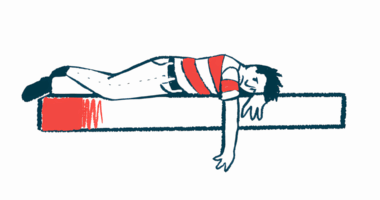Behavioral Problems in Young Patients Tied to Age, Disease Severity

Children and young adults with hemophilia A and hemophilia B have several behavioral problems, ranging from depression and anxiety to aggressive behaviors, a small study suggests.
Age, disease severity, and joint disease duration were found to be significantly correlated with several of these problems.
The findings were reported in the study, “Screening of behavioral disorders in children with hemophilia,” published in the International Journal of Rheumatic Diseases.
Hemophilia is one of the most common bleeding disorders seen in children and adolescents. Young hemophilia patients have to deal with chronic conditions, including joint disease, fatigue, and mobility limitations, as a result of the condition.
“Some of the most serious concerns of both parents and healthcare workers are the emotional and behavioral problems in children with hemophilia, which become more complicated with increasing age and can affect their quality of life,” the researchers wrote.
A team of researchers at the Alexandria University, Egypt screened for behavioral problems in children with hemophilia and how they correlate with disease parameters.
They analyzed data from 50 boys, ages 6–18, with moderate to severe hemophilia, who had been followed at an outpatient clinic at Alexandria University Children’s Hospital. Among them, 74% had hemophilia A and 26% had hemophilia B. More than half (58%) had moderate hemophilia and 42% had severe disease.
The boys were divided into two groups, according to their age: 30 children, ages 6–11, were included in group 1, while 20 adolescents, ages 12–18, were included in group 2.
Researchers evaluated the boys’ clinical history, including joint function using the Hemophilia Joint Health Score (HJHS), the higher scores (maximum of 20 points per joint) of which indicate poorer joint health. Behavioral assessments were also conducted using the Child Behavioral Check List (CBCL), a questionnaire for parents to describe their children’s behavioral competencies and problems.
A total of 27 patients (54%) showed aggressive behavior, which was the most common problem. The least common was attention deficits, affecting eight patients (16%).
The boys’ ages were significantly correlated with anxious/depressive behavior, generalized complaints, social problems, as well as aggressive, internalizing, and overall behavior problems. Hemophilia severity was also correlated with overall behavioral problems, as well as social and thought problems.
The number of affected joints was also significantly correlated with several behavioral problems, including depressive and aggressive behavior, among others.
Higher HJHS scores, indicative of poorer joint health, were significantly correlated with social problems, aggressive behavior, rule-breaking behavior, and externalizing behavior scores. The same was seen for those who had been living with joint disease, called arthropathy, for longer periods.
Overall, this study supports the “negative effect of hemophilia on emotions and behavior in patients with hemophilia,” the researchers wrote.
“Behavioral disorders in children with hemophilia are influenced by the age of the patient, the severity of the disease, the number of joints affected, the duration of hemophilic arthropathy, and the score of joint affected on HJHS,” they wrote.







